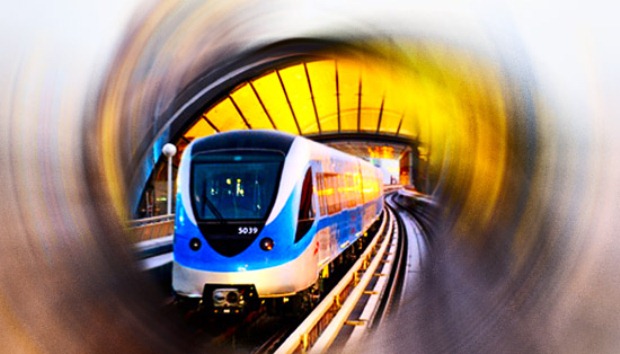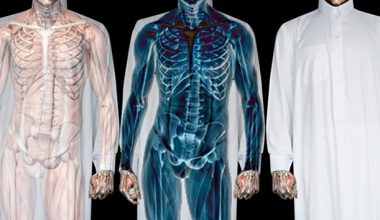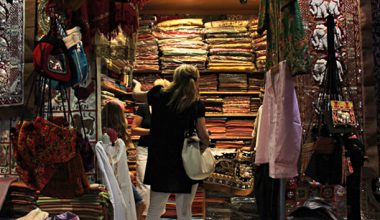
The megacity now has a mega metro.
The city of Dubai has found itself a new toy- a shiny, new train-set it likes to call the Metro. Best of all almost everyone wants to play.
At exactly 9.09pm on the auspicious date of 09/09/09, the first Public Transit System in the Gulf was launched in true Dubai style. The entire city watched As His Highness Sheikh Mohammad Bin Rashid Al Maktoum (Vice-President and Prime Minister of the UAE and Ruler of Dubai), bought the first official metro ticket, and amidst the display of fireworks and inaugural fanfare, every resident vowed to take that ride too.
Dubai’s new toy has joined the rest of it’s peers in the metropolis’s revolutionary toy box. Along with the world’s tallest building, the most luxurious hotel, and the Gulf’s biggest mall, the Emirate can now stake claim to the world’s longest, driverless, automated train system, and the first of its kind in the Arabian Peninsula.
 This has been the RTA’s (Road and Transport Authority) biggest project yet. And on resounding success after it’s September launch, and partial opening of the inaugural Red Line, they’re now pushing for the construction of the remaining stations and tracks. Currently 10 of the proposed 29 stations of the Red Line (running from Al Rashidiya to Jebel Ali) are in full operation, and The Green Line (running from Deira to Bur Dubai) comprising of 18 stations is scheduled for completion in May 2010. In addition to the two tracks under construction, another two have been proposed as well.
This has been the RTA’s (Road and Transport Authority) biggest project yet. And on resounding success after it’s September launch, and partial opening of the inaugural Red Line, they’re now pushing for the construction of the remaining stations and tracks. Currently 10 of the proposed 29 stations of the Red Line (running from Al Rashidiya to Jebel Ali) are in full operation, and The Green Line (running from Deira to Bur Dubai) comprising of 18 stations is scheduled for completion in May 2010. In addition to the two tracks under construction, another two have been proposed as well.
 For a city known for it’s high standard of living, the cheap fares come as a pleasant surprise. And for those weary of the infamous rush hour jams, the appeal of whizzing over the gridlock below is enough to make a commuter out of anyone.
For a city known for it’s high standard of living, the cheap fares come as a pleasant surprise. And for those weary of the infamous rush hour jams, the appeal of whizzing over the gridlock below is enough to make a commuter out of anyone.
Mrs. Valerie Saeed was equally pleased on the advent of the system. “I do have my own car, but I think I’ll be using the Metro more often now on leisure outings. The cabins are clean, the ride is smooth, and just about everything’s been thought of.”
The spanking new air-conditioned cabins Mrs. Saeed was referring to have been divided into the Gold Class, Women and Children only Cabins, and the Standard public cabins. Regular announcements keep passengers posted on their whereabouts and cautionary bulletins warn of the opening and closing of doors. Public safety is assured in the form of CPR certified station staff, and strategically positioned CCTV cameras to monitor any breach of conduct.
 The systems’ stations boast a wide range of facilities; from special amenities for the visually impaired, to Wi-Fi access for businessmen on the go. Even retail outlets, food counters and banks have taken advantage of the bustling terminals to set up shop, and the complete integration of public transport (taxi’s, buses, etc.) to and from stations only just sweetens the deal.
The systems’ stations boast a wide range of facilities; from special amenities for the visually impaired, to Wi-Fi access for businessmen on the go. Even retail outlets, food counters and banks have taken advantage of the bustling terminals to set up shop, and the complete integration of public transport (taxi’s, buses, etc.) to and from stations only just sweetens the deal.
The first few days/weeks following the launch, most stations were jam-packed with hordes of excited residents wanting to get in on the action. But now, approximately one month down the line (pun intended of course), the carriage-happy first-timers seem to be finally giving way to the more consistent commuters.
Farida Raina, an Indonesian who’s been living and working in Dubai for the past 6 years, is now a frequent commuter. “It’s so much cheaper than the fare I used to pay for a taxi to work and back. I’ve also definitely cut down on travel time, especially during rush hour.”
The Dubai Metro is obviously not just any other rail operation; they’ve made sure of that. So, after having successfully delivered a solution to cater to the public transport needs of a 3.3 million strong population, the city can now ride slick, along with the rest of the world’s megacities towards their next big breakthrough in evolvement.
– Shaahima Fahim
Images: Dubai Metro







